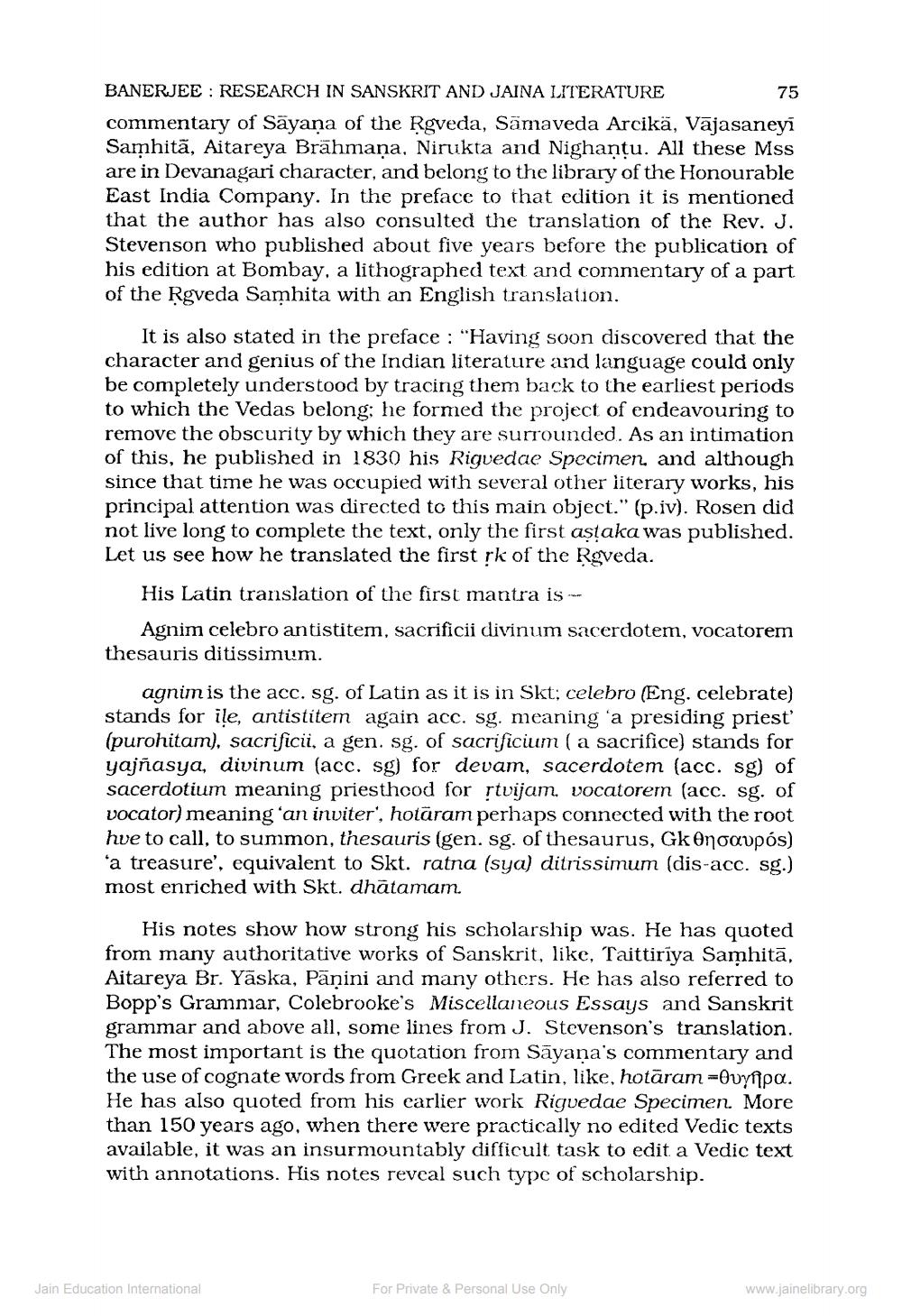________________
BANERJEE RESEARCH IN SANSKRIT AND JAINA LITERATURE
commentary of Sayana of the Rgveda, Samaveda Arcikā, Vājasaneyi Samhita, Aitareya Brahmana. Nirukta and Nighantu. All these Mss are in Devanagari character, and belong to the library of the Honourable East India Company. In the preface to that edition it is mentioned that the author has also consulted the translation of the Rev. J. Stevenson who published about five years before the publication of his edition at Bombay, a lithographed text and commentary of a part of the Rgveda Samhita with an English translation.
It is also stated in the preface: "Having soon discovered that the character and genius of the Indian literature and language could only be completely understood by tracing them back to the earliest periods to which the Vedas belong; he formed the project of endeavouring to remove the obscurity by which they are surrounded. As an intimation of this, he published in 1830 his Rigvedae Specimen, and although since that time he was occupied with several other literary works, his principal attention was directed to this main object." (p.iv). Rosen did not live long to complete the text, only the first aṣṭaka was published. Let us see how he translated the first rk of the Rgveda.
His Latin translation of the first mantra is ---
Agnim celebro antistitem, sacrificii divinum sacerdotem, vocatorem thesauris ditissimum.
75
agnim is the acc. sg. of Latin as it is in Skt; celebro (Eng. celebrate) stands for ile, antistitem again acc. sg. meaning 'a presiding priest' (purohitam), sacrificii, a gen. sg. of sacrificium ( a sacrifice) stands for yajñasya, divinum (acc. sg) for devam, sacerdotem (acc. sg) of sacerdotium meaning priesthood for ṛtvijam, vocatorem (acc. sg. of vocator) meaning 'an inviter', hotāram perhaps connected with the root hve to call, to summon, thesauris (gen. sg. of thesaurus, Gk enσavpós) 'a treasure', equivalent to Skt. ratna (sya) ditrissimum (dis-acc. sg.) most enriched with Skt. dhatamam.
His notes show how strong his scholarship was. He has quoted from many authoritative works of Sanskrit, like, Taittiriya Samhita, Aitareya Br. Yāska, Pāṇini and many others. He has also referred to Bopp's Grammar, Colebrooke's Miscellaneous Essays and Sanskrit grammar and above all, some lines from J. Stevenson's translation. The most important is the quotation from Sāyaṇa's commentary and the use of cognate words from Greek and Latin, like, hotāram -Ovypa. He has also quoted from his earlier work Rigvedae Specimen. More than 150 years ago, when there were practically no edited Vedic texts available, it was an insurmountably difficult task to edit a Vedic text with annotations. His notes reveal such type of scholarship.
Jain Education International
For Private & Personal Use Only
www.jainelibrary.org




